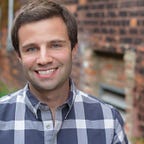The Street As a Place- Part 1
Recently, The City of Boston launched another year of #OpenNewbury, a monthly event in the Summer and Fall that brings thousands of people into an otherwise congested street filled with 4 lanes of traffic and parked cars. In sections of the street where normally 2–3 single occupancy vehicles would be parked, restaurants and cafes are able to set up outdoor seating to accommodate dozens, providing new vibrancy to the streetscape and new business for the businesses. While Newbury Street may be heading for a more permanent pedestrian experience in the years to come, are there temporary ways in which we can allow cities to more rapidly harness the Excess Capacity in our streets?
Sidewalk Labs, Carlo Ratti Associates and MIT Researchers have been exploring how we can build our streets to sustain more of these events with infrastructure in place.
Their “Dynamic Street” modular paving system allows cities and towns to build roads that shift from commuter routes to public plazas and parks in a matter of minutes. This allows cities to “create a streetscape that responds to citizens’ ever-changing needs.”
Pavement to People- A Semi Permanent Transformation
In Boston, more that 50% of the city’s landmass is paved and large swaths of that are exclusively devoted to moving or storing vehicles. Recently, a large swath of one Downtown Boston street was reconfigured to install planters, seating, umbrellas and more to convert a largely redundant section of street into a permanent plaza. In the first weeks it’s hosted impromptu meetings, lunches outdoors and more, all in a space formerly devoted to a far too wide roadway.
With both Open Newbury and Downtown Boston’s pavement to plaza experiment, it’s easy to look at these examples and brush them off as small but, as Jane Jacobs so eloquently describes it in Life and Death of the Great American City… “The trust of a city street is formed over time from many, many little public sidewalk contacts… Most of it is ostensibly trivial but the sum is not trivial at all.”
These examples and more will be explored in this series and it will evolve as we go. I welcome your feedback, criticism and ideas of areas I may not have thought about to explore as I dive into a world of opportunities. Thanks for reading and hope you enjoy the rest of the series! Feel free to follow along with updates at the top of the page.
